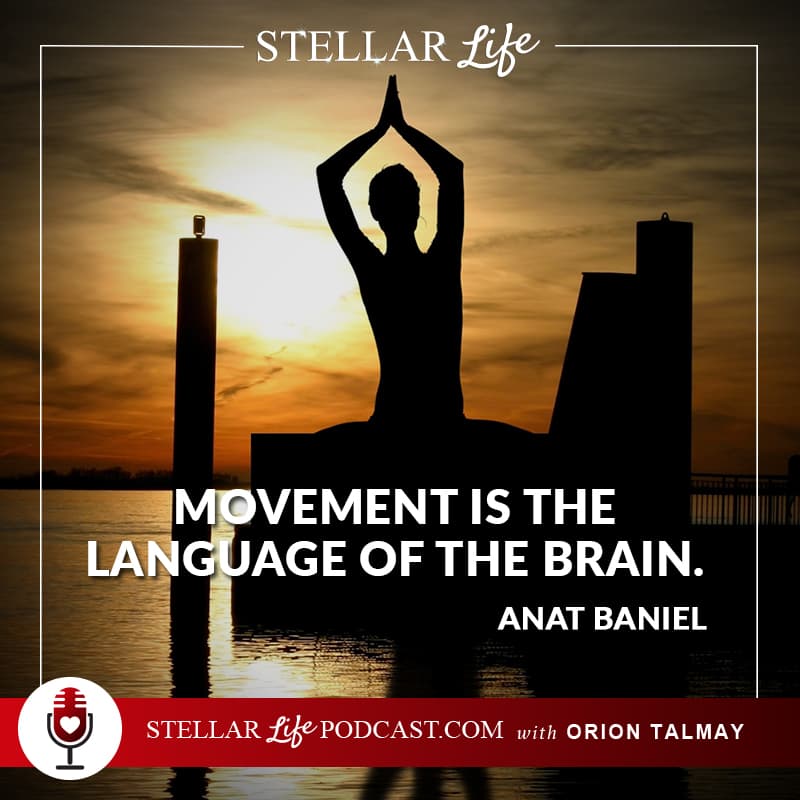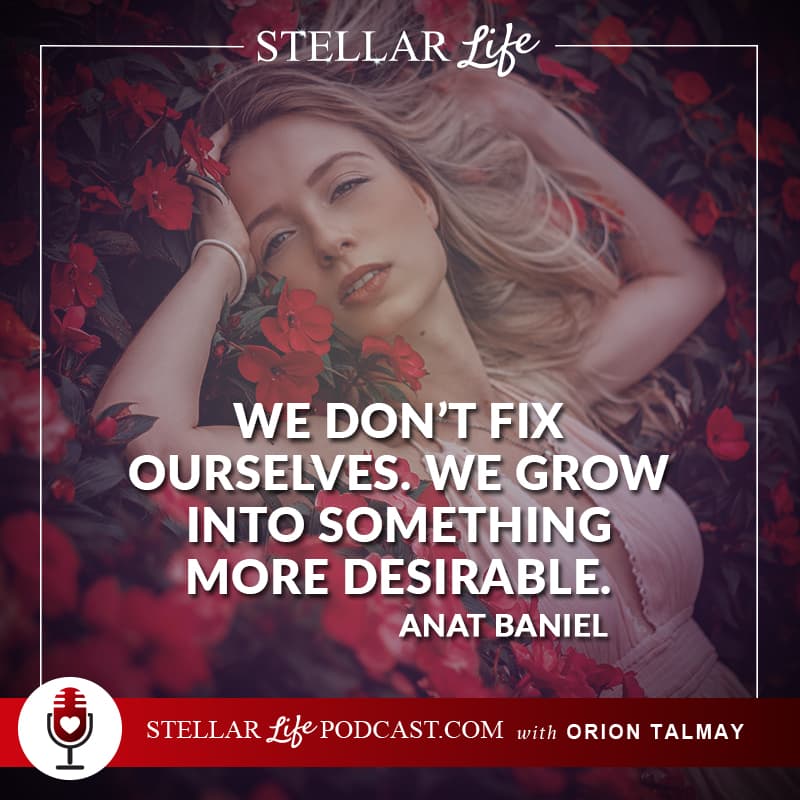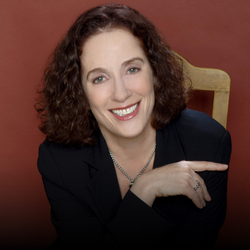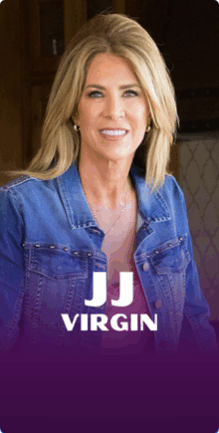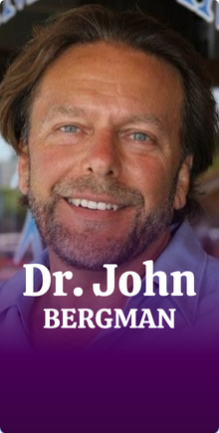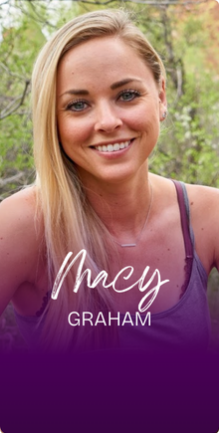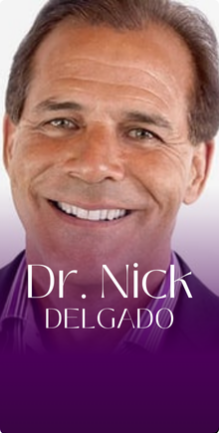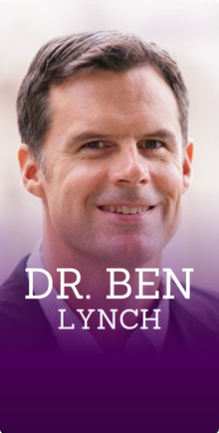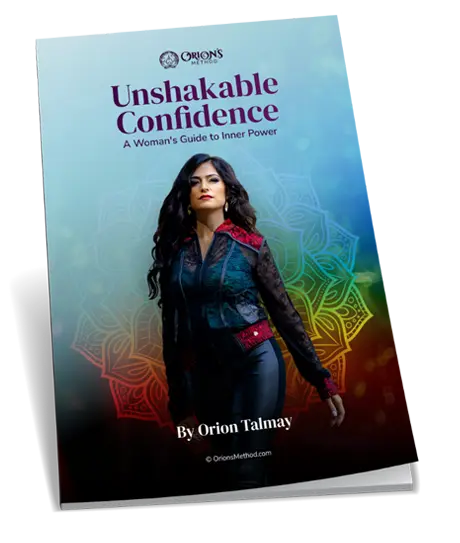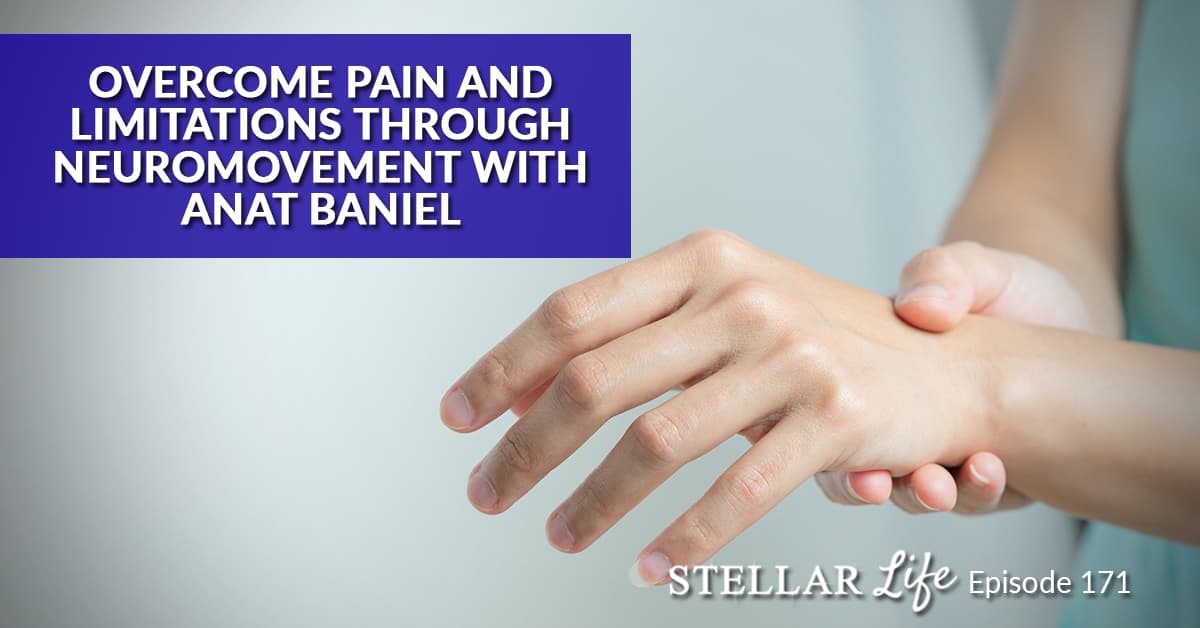
About Today’s Show
Hey Anat! Welcome to Stellar Life podcast. It’s lovely to have you here.
It’s wonderful to be with you, Orion.
Cool. Before we start diving in, why don’t you tell the listeners a little bit about yourself?
My name is Anat Baniel. I’m the creator of the Anat Baniel Method and NeuroMovement method. My background, I was a dancer and I have a degree in Psychology and Statistics. Then, I went to graduate school to become a clinical psychologist. There are two areas of interest, one was the brain. No one seems to know much about it at the time in terms of practical applications. That means doing interventions to impact the brain, that in turn impacts us.
The other thing is I wanted to use movement. I felt there were too many words and too little attention and relationship to the body and to movement. I found Dr. Feldenkrais, whom I knew since I was three years old because he used to teach his classes in my parents living room.
True thinking is a change in action. Share on XI was a toddler walking between people. I remember it until today. My ballet teacher, she was also his student, and she used his work once a week. I sought him out, and I started training with him in San Francisco. Then I was asked to travel with him, he was a lot older than me, and he needed some help with travel. He and I became very close – a wonderful student-mentor relationship, which was a remarkable journey. One day I will write a book about it. I already have a name, but not the book, Travels with Moshe.
I started using the work while I was in grad school. I started working with babies. It’s a whole story with one child. She was at the time 13 months old and was diagnosed with global brain damage. My population was musicians, dancers, my friends from university and my teachers. I was working with highly skilled people. I got this little child that has a global brain damage diagnosis, and it changed my life. I looked for ways to help her with what I learned from Dr. Feldenkrais. As I worked with her, there were so many changes because I was never trained to work with children specifically.
I moved to live in New York. Elizabeth’s parents started telling other parents. Parents from Chicago started coming to New York and I started having more and more children that I was working with. The changes were really miraculous.
I started asking myself after a few years – what is it about what I do that provides these changes in the children? I knew it was the brain. I had no question about that. People tend to focus on muscles, like if a child can’t move, or they’re spastic, or having a hard time, or they’re stiffer. People tend to focus on the muscles and on the body on the periphery.
In my world, I understood that it’s the brain that tells the body what to do, but the brain gets apprenticed to movements. That means, through the experiences we have, we figure things out. We need to move for the brain to grow and form itself. In turn, that’s what gives us voluntary action and freedom to act and succeed. As you say, have a stellar life. More and more children started coming, and I asked what is about what I do that makes the difference?
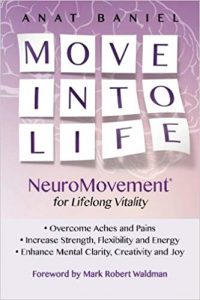
I took a year and I observed the stuff and I came up with what I call The Nine Essentials and I wrote my first book, Move Into Life. That did some wonderful things. First of all, I formulated the essentials but also for positive brain change for a stellar life. I also got connected to some world-renowned neuroscientists that found what I figured out to be in harmony or in accordance with what they were discovering in the laboratory. I got a lot of support from amazing people like Dr. Michael Merzenich who is called the father of modern neuroplasticity science, Dr. Jill Bolte Taylor, Dr. Martha Herbert of Harvard – she’s a big name in functional medicine and in autism, and Rick Hanson – the list goes on and on. Wonderful people.
Once I defined it, it gave me the freedom to move further. It was like I created a stepping stone for myself. I trained people to become practitioners. We have a few hundred practitioners right now, I think around 700. We are talking to school districts to bring the program to the whole school district both for children with special needs and regular class, to bring the principles of the work and the conditions they get in order to learn well. This is my story, and here I am with you.
It’s a fascinating story. You’re really helping the world and it is so extraordinary that you learned from Dr. Feldenkrais.
He was a Ph.D. in Physics. He also had a degree in mechanical engineering and he finished all the studies for medical school because he was married to a medical student. He was also a mathematician and a black belt in judo. The most remarkable, genius human being I have met ever in life. I’ve met quite a few amazing people. One of my teachers got a Nobel prize. I studied statistics. Anyway, I was his teaching assistant. I had amazing teachers my whole life. Some of them are certainly at the very top.
I took some classes, it just seems like we didn’t do much and somehow I felt amazing at the end of the class.
Absolutely. First things first, what about what I do that makes a difference? And, of course, my platform or my basis was my studies with him and my work with him. The other one is how to translate it so people could consume it easily. It’s not hard to do from a mechanical point of view. On the contrary, you do very seemingly little and gentle and all this stuff. It’s much more demanding on the brain.
Essentials that I define and I call my work, Anat Baniel Method NeuroMovement. Each requires a more evolved brain so from the outside you’d say that this person is more enlightened. They are able. They’re more aware. They have more suspiciousness inside. They’re in the present time. They pay attention. They can notice what’s going on. They can go slow. They are not totally reactive. From the outside, the behavior looks enlightened, from the inside–from my point of view–it’s the brain that evolves and is potentiated to work at a higher level.
I love brain hacking. I saw that you had an interview with Dave Asprey. I met him in person a few times. I really love his work. I also go to Peak Brain Institute to do a lot of neurofeedback. I did 40 Years of Zen with Dave Asprey. I’m all about developing my brain and learning about my brain. I’m also very much about movement and embodiment and even releasing traumas through movement. There’s such a powerful connection between the mind and the body. When you were on this journey of writing your book, and discovering what is it that you do that is so extraordinary, what movement have you created that affects the brain?
Wonderful question. I love this question. I would side-step for a moment. What I realized that I facilitate for the brain, I create conditions where the brain does what it’s built to do, just easier and better. Or as Michael Merzenich said, the Anat Baniel Method Neuro Movement helps create stronger, better brains. It’s like a strong heart or it’s like a good working liver. The brain has a job, and the job of the brain is to put an order in disorder and make sense out of the nonsense. If you’re very, very tired or flown 10 hours flight to one part of the world, and two days later to another 10 hours, and then another 3 days later to another place, and you wake up and you don’t know who you are, you don’t know where you are. The brain has a hard time figuring stuff out. Or if somebody’s drank too much alcohol or certain drugs can do it, or great emotional distress can do it.
The brain is built to be able to put an order in the disorder to make sense. If you look at the written letters it makes sense, you can read it, and when you pronounce it, it has meaning. That’s a very remarkable thing that the brain does. Of course, working with children with special needs, it’s so prominent that they can’t. They have all the bones, all the muscles, and the brain, but they can’t do it. So, what do you do then?
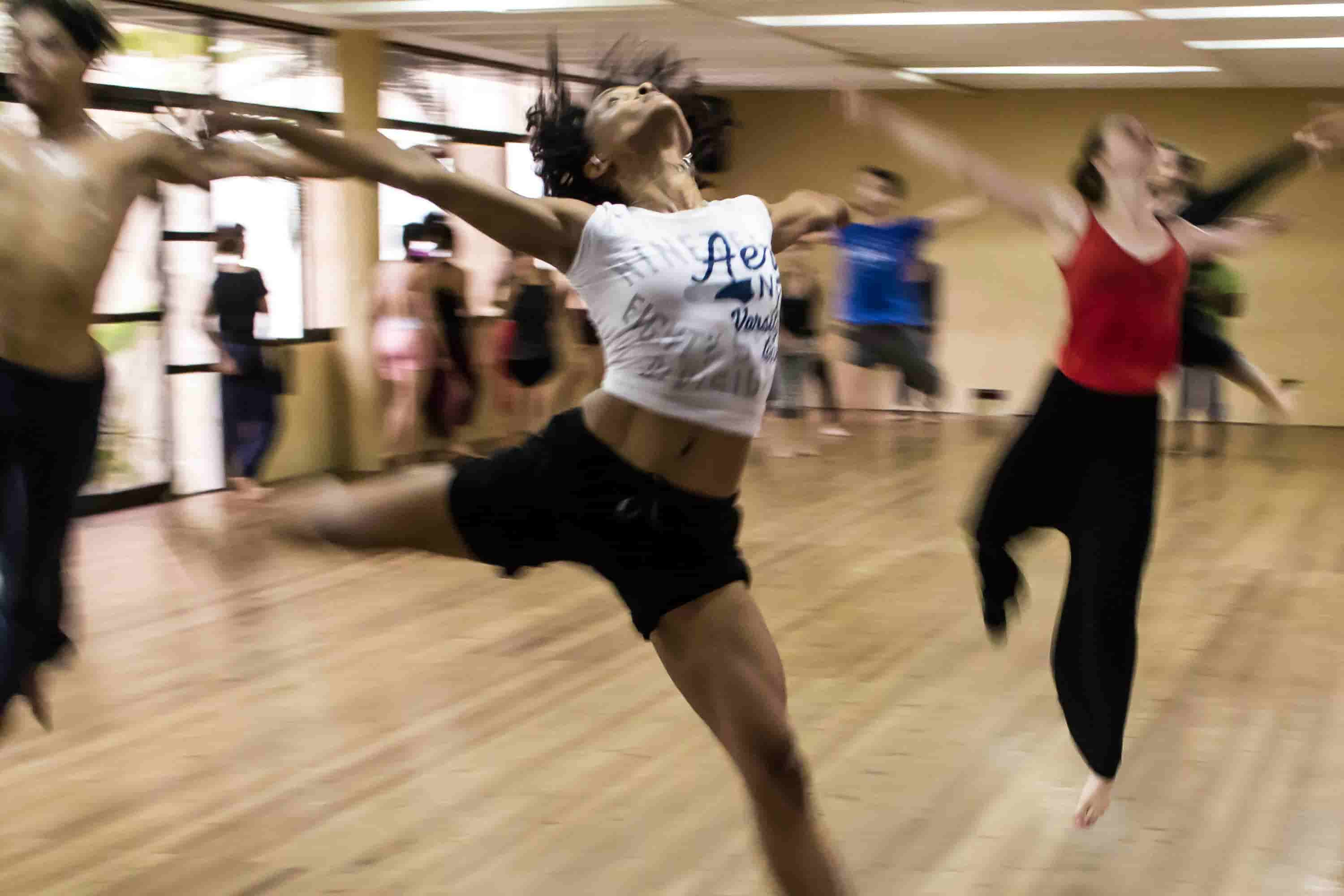
Later I’d like to talk a little bit about the difference in this approach for most ways to try to help people recover or improve. Traditional approaches that really break the boundaries – some beautifully.
What I realized, it took me quite a few years to think it that way, is that the brain is not a mechanical system. The legs, arms, and body that we know and see operate according to the mechanical system rules. If it’s heavier and you want to lift it, you need more power. If It’s lighter you can do it with less force. That’s one example.
We know very well the mechanical system. Ever since we come out of our mother’s womb, we experience the gravitational force. When we move and bang into something, we might be moving it. If we grasp something, we bend our elbows and it comes closer to us. It’s just movement. The movement is the source of all of what comes into the brain, the information. The brain is the information system. It works with very different rules than the mechanical system. The mechanical system is very important, it’s just a different set of how it works. The brain is an information system.
The next question is what’s the source of information for the brain? People would say in one way or another, that it’s the stimulation that comes from the outside and the inside. That is true except that’s not enough. I’ve worked with too many adults and children who got lots of stimulation, trying to make their arm move or trying to brush their tongues so they start talking. Let me tell you, it does not work or it works in a very limited way.
Stimulation alone is not enough. The brain has to do something with the stimulation to transform or to turn it into information. That is a perception of a difference. Think about colors. I’m looking at something that’s green in my fireplace right now and a nice red vase next to it. I see that the green is different to what I named red. But if my cornea–the receptors in the eyes–do not provide the frequencies and so on, the brain can’t notice that it’s different, I will not see color. It has nothing to do whether I’m intelligent or not. It has nothing to do whether I can be talented in something or not. It just has to do with I don’t perceive a difference.
In computer science and in neuroscience, it is called signal to noise ratio. What happens in the brain is nothing and then something. There’s always activity in the brain. There’s a background activity, of all kinds of sorts. That is the background – the noise and the stimulation has to be sufficiently different, distinct so that we notice it.
Another example, you hike or you walk, it’s a beautiful day and there are trees on either side. You’re completely relaxed and, all of a sudden, you perceive in your peripheral vision something moving on the ground and you jump. You know that you are going to jump and why you jumped. You jump because the brain has learned that this kind of movement could indicate danger; a snake or whatever. If you don’t notice or perceive it, or it doesn’t mean anything to the system, you won’t do anything about it.
Movement is the language of the brain. Share on XWhat happens when we are stuck, or we have a habit that doesn’t work for us, or we need to learn something new is that we need a brain that’s awake, alert and perceives differences readily and easily and find differences, not just differences. What the essentials do is they facilitate, they enhance the brain’s ability to perceive differences.
What’s the difference between the traditional method of just stimulating the muscle which is different than the muscle not being stimulated, to the way you create the contrast through the movement?
It’s the essentials. I’ll just say a few essentials very quickly. The first and most fundamental essential is movement, but movement alone is not enough. Movement, if it’s just automatic or unintentional, it does not drive a lot of changes in the brain. It usually grooves in what’s there already, the patterns that are there. What happens is you add to movement, attention to what you feel as you move, or as I call it the feeling of self. It’s movement with attention to what I feel as I move that drives very intense, very dense, rapid changes in the brain, new connections from which the brain can then extracts certain of those connections and create a neural network that allows for this, whatever we are learning.
Movement with attention, for example, when I work, I’ve worked this week with an 88-year-old man, a 77-year-old man with his wife and a 6-month-old baby who is supposedly not learning properly and he is actually brilliant. It’s sometimes genetic, sometimes there’s some brain injury or sometimes there are structural deformities. Anything that gets in the way of spontaneous growth.
I actually had one six-month-old, one eleven-month-old, and then the older people—they all learn at the same rate. The changes in the child are much bigger because the child hasn’t learned that much yet, it’s a lot more dramatic. The intensity of the change in the adults and the speed of change is the same. One of the differences among adults, babies and young children is that young children tend to adapt to change as if they’ve always been doing it already.
I get a child that never rolled over, never crawled or never talk, and they start saying some words or start crawling, and they just do it. The very first lesson that they do it and they just don’t know that it’s new. They do it as they’ve always done it. Adults, when they learn something new, depends also on their training, you’ve done a lot of zen and you’ve done a lot of things. You are trained to change, you’re trained to accept change more like a child, I would guess. Many adapt, they change, and they go like, “Oh, I don’t know if it’s from the lesson or maybe because I drank beer last night,” and, “How do I keep it?” all kinds of things that create interference, right?
Yeah, the eagle mind.
You can call it the eagle mind. It’s in the way and it’s also brain pattern, it’s also habitual to that way of thinking or relating or emoting. Everything else is associated with that, which is not the new learning. So, there’s a little more work to do there. Anyway, the first essential is movement with attention. If you think about it, movement is change. If you pay attention to what you feel as you move, you start preceding differences.
When I think about paying attention I think about adults, but you just decide to train a six-month-old. How can a six-month-old have the same attention to the movement?
They have a lot more. Have you ever seen a baby lying on their back and just moving their hand really slowly and their fingers, just watching it like there’s nothing more interesting in the world?
Yes, I have. It’s beautiful.
They just feel it, they notice that it moves, they get sensations, they attend to it, they don’t have language, but they’re infused in it. When I work with the children, that’s a big part of what we do in our training practitioner program. I touch them in a way that calls upon them to feel, to notice. I pretty much have not had a child stop. Their eyes don’t blink—these little ones cannot blink for a long time—and you see that they go internal. They notice that it feels different. That’s all there needs to be there.
We have children that don’t crawl, this and that, they’ve been put in this position, and after one or two lessons they start crawling. It’s not because we stretch them or we yank them or drill them for hours. It’s because we give their brain the opportunity to figure it out. So, attention to what you feel. Let’s say if you go to the gym or you do yoga or whatever you do – make a coffee, wash dishes. If you just take two to four minutes at a time, that’s a lot of four minutes of true attention. Most people never pay attention, really attentive for more than two, three, maybe ten seconds, and then there’s a lot of inner chat or distraction and all these stuff.
You pay attention to what you feel in your shoulder, in your hip, not what you should feel, not what you are supposed to do, or how you’re supposed to move. Just feel it. Don’t even become aware of the sense of defining it. Just feel it. A big part of the training that we do is to feel and the little ones, if they don’t move or don’t feel, their brain cannot learn. There’s no learning. The process of the brain structuring itself will happen not much. Movement is the language of the brain. That’s what the brain is built to do, is to organize the movement. That’s the primary purpose of the brain. Pretty much everything we do is movement. Including emotion, including thought. Everything is movement.
Are our thoughts movements?
Think about it. You start at a Point A and you end at a Point B, or D, or Q. How am I going to make this? You hear what I said and then you go like, “I would like to understand this,” and you formulate the question. You create something that wasn’t there. It’s a lot of movement in your brain. Some of it in your muscles. Things happen subliminally in the musculature. But true thinking is a change in action.
People ruminate. People say the same thing over and over again. That’s not thinking. Maybe somebody else thought it or you thought it in the past, but it’s not thinking. Thinking is always new. It’s created. It’s from zero to something. It’s always movement, can’t be without movement. We don’t think of thinking as a movement because we tend to think of movement only in a mechanical way, like displacing an object in space. Anyway, the second essential, we want to create a system that is able to notice and has the inclination to perceive differences.
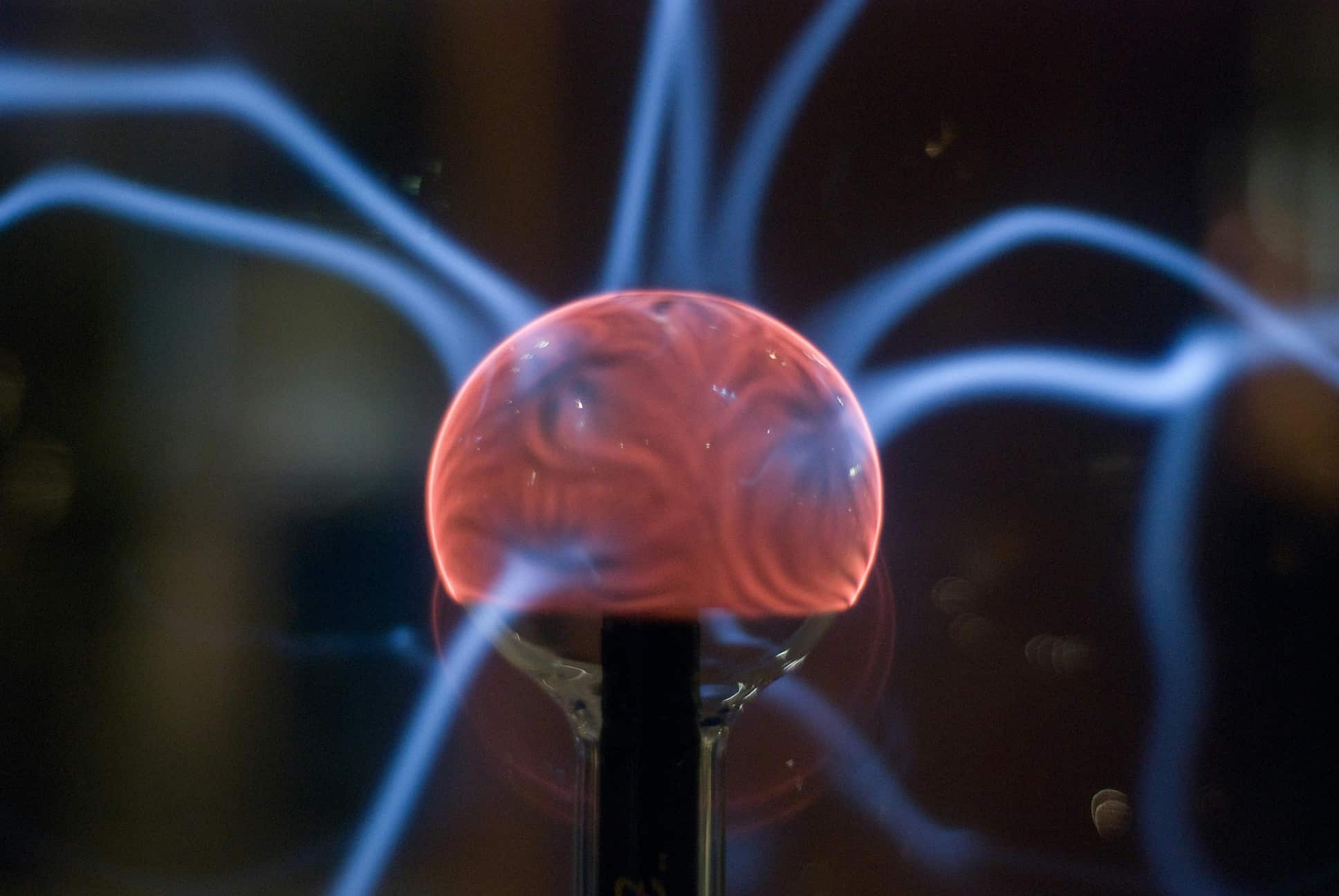
The next thing is slow. If you know, which I think you do, a little bit of neuroanatomy or neurophysiology, fast we can only do what we already know. That’s how the brain is built. That’s the patterns that have already been grooved in, have been marinated, the signals can go through them quickly, you can do anything fast. Slow allows us to feel what’s going on, to notice, then we start noticing differences.
Very often, all I have to do is take somebody who can’t do something and I go, “Okay, back off and now just slow down.” Many people resist because people think they are supposed to do things quickly. That will mean they’re doing them well, or they’re talented, or they’re skillful. But to acquire a new skill or to improve on something you already know how to do, slowing down is always required. A lot of children in school get left behind today because it’s too fast. It’s not that they’re not that intelligent. It’s just too fast. Very often, when they ask questions it’s like a test. Before you test for anything, allow it to grow and form because a lot of it is questions.
Sometimes, little babies if they have issues and they were prodded a lot and all that, they see a stranger and they cry, they’re fearful, and that they’re used to doing it. They don’t know they’re crying. It just comes out of them. They don’t have the distinction, “Oh my God, I’m crying.”
One of the things I do when they’re a little bit older — I have 1½-year old children where I start doing, they start crying, we’re very careful not to hurt and push; this is very important for learning. I said to the child, “Oh, you’re crying.” Just the tone of voice creates a distinction that usually gets their attention and then I go, “Huhuhu….” Then I say to them, “This is crying.” I don’t assume they know anything. Why would they know?
Then I say, “do you like crying?” They look at me so surprised and I say to them “do you want to cry?” The sweetest moment is when they cry and shake their head, “No. I don’t want to cry,” or they don’t. They can’t speak. They can speak but not so well. “If you don’t want to cry, you can actually stop.” And then I do something to help them pay attention. It’s easier for them to do. That’s giving them the distinctions.
Distinctions, by the way, NLP does it a lot. The distinctions are what gets us to get it. You have to have this versus that or you don’t get anything. That’s slow, the second one.
The next one is the reduction of the intensity of the stimulation and force of effort. The greater the effort, the less sensitive we are to changes. The bigger the changes to be, we’ll even notice it. If you’re in a room where there is a party, somebody comes up to you to talk, and the music is really loud, it’s almost impossible to hear what the person says, even though they speak very loud because the background noise is so loud. So, you go to a side room and it’s a relief if you just talk normal, you hear and you understand English again.
The same thing with the muscles. You want to change what the body does. You have to slow down, you have to reduce the effort so that when there is movement, the brain can notice what is going on and can use that to reorganize, to recompute how to do whatever it is that you’re trying to do. It gives us a chance to be really intelligent.
The next thing is the variation. Variations are differences. One of the things that I do with children, for example, that have difficulty with math. They are just learning to add, one and one is two, three and one is four, and they have those long sheets, printouts. Then we go all these gazillions of questions. One of the things I do and I say, “Okay, my turn,” and I go like, “One and two, is that 20,000?” They don’t know what 20,000 is but they know it’s really big. They laugh because it’s so good to catch me making a mistake. They laugh and say, “Oh no.” I said, “Oh, is it more or is it less?” You understand. I give them and then, as they get better at figuring this out, I either reduce the discrepancies so it requires more refined perception, and I can increase the complexity. That’s just an example.
I always carry it with movement because I found out—I work a lot with world-renowned musicians, dancers, and all that stuff— when the movement is presented, right now it’s movement with attention, slow, gentle, and variation, the brain just pops. The brain starts working so much better. Then, people can learn something they couldn’t learn before.
Another one, which I think you would like, is flexible goals. Goals are important. They help organize our action, they give it context to our actions, but if we could achieve the goal, if we knew how to do it, we’d do it. It won’t be a goal. It’s just something we do. A goal means we’re not there. It usually implies we don’t know how to get there. Now, many people assume they know how to get to a goal and they don’t get to it. We don’t know. Something we don’t know how to do, we need to know that we don’t know. There’s also a perception of a difference.
We don’t fix ourselves. We grow into something more desirable. Share on XThen we start taking actions in the direction but we’re not compulsive. We’re not the, “I’ve got to get there. I’ve got to go back tomorrow.” You don’t know what’s going to happen. People have a stroke and they get goals. Children have issues in school and they get EIPs or whatever it’s called, then they put a goal, “In three months…” they will fill in the blank. I said, “You can’t do that because you don’t operate that way.” They might do your goal, but they might do something else that is absolutely exceptional. You don’t know what they will do through the process.
Flexible goals allow our brain to extract information from seemingly unrelated areas at times, to find a solution, or to figure out how to achieve the goal. If you look at science in a lot of the discoveries, Archimedes is a famous one. He’s was one who went to figure out how to measure the weight of gold in the already existing crown. He tried to solve it but didn’t figure it out, And then, he took a bath. The water overflowed, and it gave him the idea of how to do it.
In chemistry, there’s this guy, he dreamt about snakes in the fire and the shapes and how the snakes move. He woke up and he figured out how these molecules are related to one another. It created the field of chemistry as we know today. It was a dream. He didn’t know he’s going to dream. He didn’t know that he was going to get the answer. He was playing with it. If you put variations into your path, that’s what children do when they’re healthy. They play, play, play, play, and play.
My father was a researcher. There was an invention and they built the plant. There was something bad happening with the process. He told me he sat for two hours at the computer trying to solve it. He couldn’t come up with anything. And then, he remembered my variation and he decided to give it a try. He started putting equations and solutions that he knew ahead of time we’re going to be wrong. He did it anyway and in 10 minutes he had the solution.
Wow. That’s amazing.
It’s very powerful. It actually really works.
Why did you think it works? You just give your mind a break?
No, it’s not a break. You give the brain the opportunity to generate information. If you wanted to go from here to there, you had zero new information, and you didn’t know how to do it, how would you know how to do it? Okay. How about we give our brain information? How about we get more enlightened and we stop being primitive by trying to achieve and being limited and starving our brain? Not starving nutritionally but starving it for information. Each one of the essentials promotes perceptional differences and richness, enrichment of information in a context. The information is always in a context but in a context so the brain can do something it didn’t do before. And then, we can do something we never did before.
Right now, I’m talking to you and a lot of what I say is novel. I know that. I know because I live in the world. I know how people think and there are elements that you can get familiar through your meditation, through the NLP, through this and through that. But it’s new, so in the beginning, the brain goes, “Huh? What?” You know what the brain tries to do. It tries to think it into an existing configuration. Something familiar.
The question that I used to be asked a lot, especially earlier on, “Is it like yoga? Is it like pilates? Is it something else?” and I said, “Well, it’s like all of those because all of them include movement.” If you’re just going to think it’s pilates, you’re not going to get a lot. Pilates is great, but it’s not what we do. It’s new, it’s novel.
Novelty can be disturbing to a system because once you are already settled and you know what to think, what to believe, how to eat, and how to feel – who wants to change? Everybody wants to change provided they don’t. That’s how the brain is built, by the way.
The brain can do two things. Keep us on the habits and they’re automatic, which is very important but it can also do the new. What happens is people proceeding and progressing, there’s the tendency to do what’s already been done before. It gets stronger and stronger, and the new gets less and less. That is a huge factor in people aging. Huge, not because they’re older. Not because they’re something. It’s because their brain’s lights is starting to go down.
That’s why I vowed to never stop learning and even when I walk down the street, I will take different paths or try noticing different things, change the direct out of that habit routine, like the little comfortable box we put ourselves in.
Sometimes we’re in a very uncomfortable box and we still don’t know how to get out of them. It’s not simple. That’s why you exist. That’s why I exist. We try to facilitate for people to create things that were not there for them before -internally and externally. While they feel safe, it’s not too abrupt or anything like that. So, that’s essential.
The other one is the learning switch. I discovered working with large groups of people, that sometimes—it still happens—I’m invited to teach inside somebody else’s training. I notice with certain training I came, people were like—I would have, say 100 people on the floor and I give them a movement instruction—melted jello or something. They need to relax but they were not alert. They weren’t responsive. They weren’t very bright. With the children, I realize that they were trained to shut their brain down and think that it’s really great.
Give yourself room, give yourself permission, and be a close observer of who you are. Share on XI would start teaching in a way that will wake them up and all of a sudden, we started having people responsive to themselves and intelligent. It was like, “Hey, wait a minute. Hear the brain. Use it,” kind of thing. But with children, when they get interventions—that’s coming to your earlier question—where they’re drilled to do things they’re not ready to do, they don’t have the underlying neural networks to do it, they shut down and they stop expecting to learn. They lose the feeling of learning.
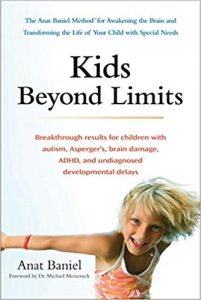
Learning is something you feel a certain way. You know you’ve learned. I realize that oftentimes it’s associated when children are drilled two, four, eight hours a day trying to fix them. It’s not one of my essentials but very much developed this in my second book, Kids Beyond Limits. The whole idea that we don’t fix people. We don’t fix ourselves. We grow into something more desirable. It’s growth, it’s differentiation, it’s increased possibilities. It’s not fixing. I don’t know how to fix anybody, including myself, by the way. So, I let the process go forward and things get taken cared of as a result.
I realized that people are either in learning mode or not. Now, scientifically it’s known that that’s the case.
Can you figure somebody to be on a learning mode?
Absolutely. First of all, very simple stuff. You’re hungry, you are tired, you just finished listening to an hour, two hours of the intense lecture. You’re sick. I don’t know if I said that already. Your learning switch is not going to be on. I just read a little article today in the news that you don’t want to go to a doctor at three o’clock because that’s when they make most mistakes. The best they are at eight in the morning when they start. They’re the most alert and after they see X number of patients, they just have gotten to information fatigue because they have to think, they have to figure things out, they have sometimes to invent. It’s a form of learning, creativity.
Anyway, it’s just how it is. They don’t try to learn when you are under certain conditions. If you’re doing fine, then you’re going to learn. I would recommend two things. I’d recommend some movement before, sandwich whatever you want to learn with movement. Movement done the way I talk about it really potentiates the brain.
I worked on an elderly woman, I worked on her husband the day before, I worked on her yesterday, he’s been diagnosed with cognitive decline, which could turn into Alzheimer. Wonderful man, lovely person. They’ve been together forever, they’re in their late 70s, and she’s just petrified. Petrified of losing him, petrified of him to care and be with him when he’s not there anymore; cognitively and emotionally. Everybody tells her stuff, “Do this, not that,” and she says, “Yes, I know,” but it doesn’t help.
What I did is I did some movement and got her to shift. She was surprised. She started crying. I said, “She’s crying.” I said, “There’s plenty to cry over.” But she cried a little bit. People usually stop after a little while and then she got really shifted and got more ease. Just extremes of ease. She used to be a dancer and stuff, so she’s very familiar with the movement.
Then, I talked to her. In that mode, I gave her distinctions. One of the reasons she was so anxious because everything was clamped into one ball. She couldn’t sort any solution for herself. One of the things, I pointed out, I said, “Look at him right now.” He was wonderful. He was in the session, he said things, and we laughed. And I said, “He’s delightful right now. He doesn’t have Alzheimer right now.” She said, “Yeah.” And in the end, she saw it moved her. You understand you give people the opportunity to learn.
Also, when I teach kids math, I do movement because their brain gets better brain work with math that way. Slow, gentle, create variations, not looking for things to be right. I don’t look for things to be right. I don’t want people to hurt themselves but for me, not right is a variation.
I worked with a musician, world-class cellist that was suffering from a lot of back pain and some shoulder pain. He couldn’t pretty much play anymore and he was desperate. That was his whole life. I sat him down and I read to him my first book. I talk about it and I have him take the cello. I told him to play a few phrases of Schubert Quintet. It was just gorgeous. I said, “Okay, perfect.” That was the baseline. And then I said to him, “Can you play for me something really simple like Twinkle, Twinkle,” and he was a little offended. That’s a variation. I said, “I know you’re a world-class cellist. Hang in there with me.”
Then, I said to him, “Now, can you play badly?” He looked at me, he was shocked. Ever since he was five or whenever he started playing the cello, everybody wants him to play correctly. So, I said, “Play badly.” He couldn’t. He just couldn’t go there. I said, “Do you work with little children? Do you do cello classes for little children?” He said, “Yes.” I said, “Do you play badly sometimes?” He said, “Oh yeah.” So I said, “Can you imitate one of them?” He thought for a moment and he imitated.
Meanwhile, I was doing some movement with his back, whatever I do, he was going to play badly anyway but he intentionally played badly. I said to him, “That was really good.” I said, “Can you play badly in a different way?” I took him through four versions of playing badly and on the fifth, he couldn’t think of another way to play badly. I said, “It’s okay. You’ve done four really good bad playings for me.” Then I said, “Now, just play,” And he was pain-free.
Oh my God. Wow.
Exactly. That’s how it works. This is it. It’s stunning the potency of the brain. We’re talking 1.8 million new connections per second when the brain is really learning. It’s a billion, roughly, a minute, and we use it if you think of it, I don’t know, you think of a scooter. We’re scooter users, compared to what we could be doing with ourselves.
Somebody is listening to you right now, I think we just talked about seven out of the nine essentials but it’s also on your website. How can they take this information and apply it in their real life?
There are a number of ways. First of all, they can go on my website, anatbanielmethod.com and download the free ebook about the nine essentials. If anybody’s a parent that wants to apply it with their child or children, there’s a version for children, how to work with children. That’s the immediate low-hanging fruit.
I have a podcast. Right now, the podcast focuses on children with special needs and parents of those children. I also have a few therapists that come and listen to it because they learn stuff from it. That they can find on the website. I will also do stuff for adults but not yet. First, I want to run for a while with the children thing.
What adults can do for themselves? I have a video program they can get and they’re different programs. If people have any pain or they don’t feel safe with their movements, what I would recommend is my program, Healthy Backs. It’s NeuroMovement for Healthy Backs. And then there’s one after that, NeuroMovement for Healthy Necks. Even if you have pain in your necks, start with the back one because the back has to get better organized for the neck to get rid of the pain. Most people don’t know that, but it’s really important.
These are for more in the direction of pain. If you start, then start with that. Another one is Healthy Backs, Scoliosis, and Pain Relieve. Each one, by the way, is six movement lessons. Each movement lesson has around eight to ten variations that you start the lesson and in the end, you do something that you couldn’t before and/or you do what you could do before but a lot better.
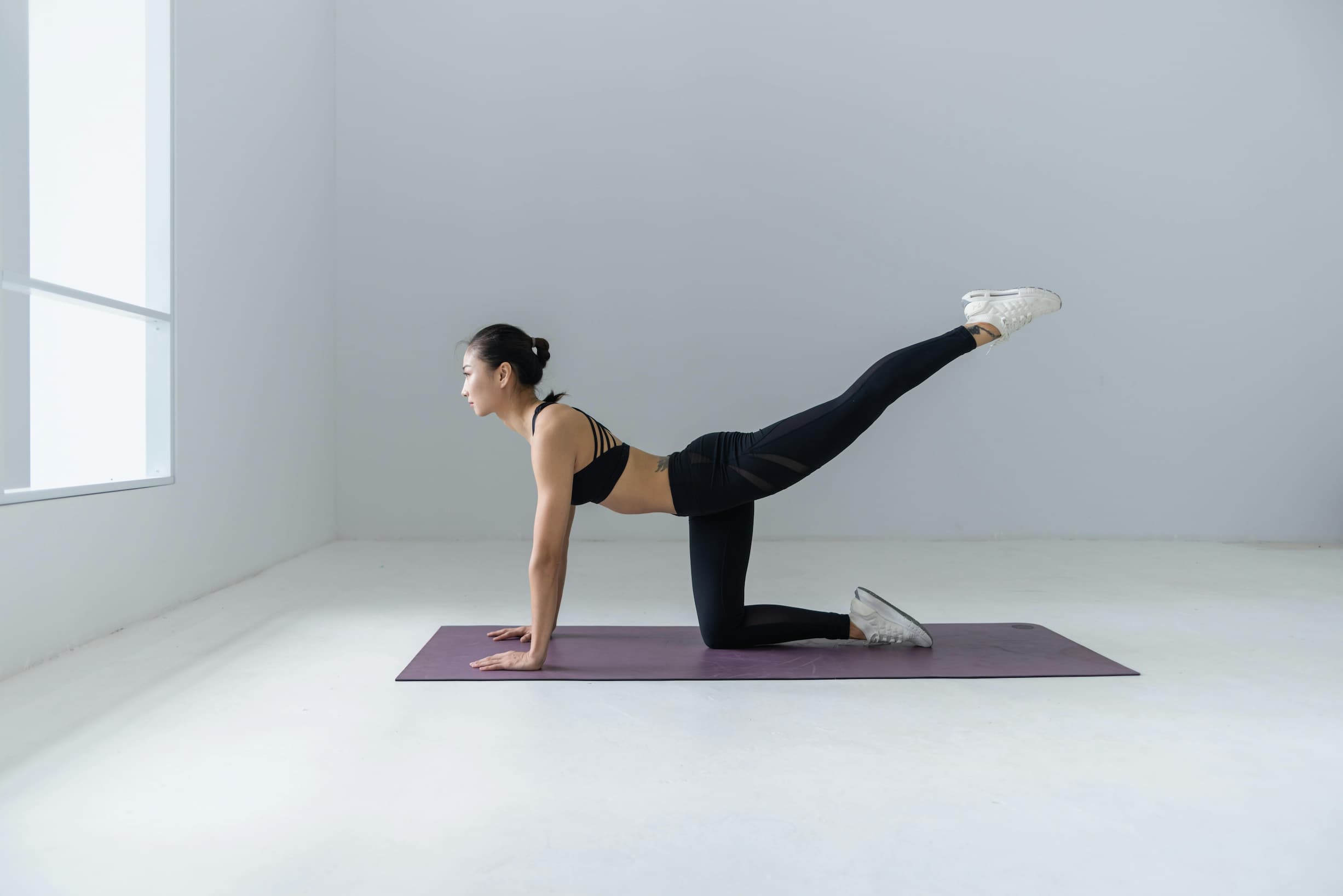
I used to work a lot with dancers and I would have them do my movement lessons on one side so they could feel the improvement on one side only, like doing an arabesque or turning one way or the other or what not, and that was a big convince for them. Otherwise, they might have not believed. Then I have a program that’s called Whole Body-Brain Fitness Program. It’s a program with four different subprograms. The first one is Whole Body Fitness. Basically what the first program is focusing on six different areas of the body and its relationship to the rest of the body. Getting the brain to map those areas more because most people’s pelvises are not sufficiently represented in the brain. There’s very little representation of our bodies in our brains. We can’t have voluntary movement because we don’t have enough connections created between the brain and the periphery.
Over the years, I have observed people and many have no sense that most parts of their bodies exist. People know their hands and fingers usually better than most parts of their body. They know very little of their backs and their pelvises. That’s a problem because the pelvis is the power center of the body. Many people don’t know their feet very well. But you take a dancer or an ice skater, then they know their feet a lot better.
They are focused on every little muscle in their bodies.
They also use it in very elaborate ways, so the brain has to figure it out and creates connections to control the whole thing. The first one is Whole Body Fitness. By the way, all those lessons will help people with pain relief, ease, and increased flexibility because the brain organizes the movement better.
Then, one of the sub-programs there is NeuroMovement for Healthy Breathing. The whole six lessons are geared to facilitate the movement of breathing and the ease of breathing. Another one is Healthy Dynamic Sittings. Both in chairs and on the ground, making sitting easier and a lot less destructive because people sit down and it’s almost like their brain shuts down in terms of their body. It’s like they go to sleep on themselves.
It sounds like wonderful programs. If they want to go and choose from the menu what is great for themselves, they go to your website, right?
Yeah, anatbanielmethod.com and one program that is a five-day workshop is wonderful is Vitality, Anti-Aging, and Well-Being. That has also presentations, it also has Michael Merzenich talking for an hour. It has demonstrations and it has 11 movement lessons.
These are the programs and then I have workshops. Coming up in Portland, in California in 1440, in the East Coast in Kripalu, in Vancouver in the weekend after next weekend. If anybody wants to try a workshop, let’s do both.
The big one is the practitioner training program. That is a phenomenal program. It’s so life-changing and revitalizing for years that people participate in it and then people can also work with other people, adults, children, whatever.
And that’s how you keep your legacy and help other practitioners help the world, which is beautiful.
Absolutely.
If you are listening, you are called to be a practitioner, to help little children, to help adults that have some problems with their movements in their bodies, and you want to use this method, then go to Anat’s website. You can sign up to the programs, the workshops, and the training, and you can spread your life in the world.
Yeah, it’s amazing. It’s really amazing, the demand for work is almost everywhere. I just came in from Russia and I went to Moscow. It was just so moving. The hunger of people to grow. We are built to grow throughout life. You’re doing it and you do that to other people yourself.
Thank you. Anat, what are your three top tips to living a stellar life?
My three top tips. I think the first tip is to know that no matter what your past is, good, bad, remarkable, where you’re at today, there are truly infinite possibilities for you to change and vitalize, revitalize, and discover. You can live in a felt reality of possibility. Today, Orion, myself, Orion’s husband, other people, there’s so much out there that offers itself to resume the process of what I call organic learning. That means learning the changes to you. That’s the number one, just know it’s possible whatever the content is. You just have to figure out the process.
The other one is to move. Don’t just move, exercise. A lot of people don’t like to exercise, it doesn’t work. But move maybe for pleasure and using the essentials usually helps the movement become more pleasurable. I’ve worked sometimes with people that I had them walk outside the front door, around the circle where their car came in, and walk in five minutes, four or five minutes, twice or three times a day, all the way to going to Europe with their family and walking for hours every day. So, just give yourself room, give yourself permission, and be an observer.
Be interested. Be interested in yourself, interested in what you feel. It’s not self-centeredness. It’s wakefulness. You do it and then you get interested outside of yourself. And experiment. These are the three things. Just know, the movement from unwell to well can be in a fraction of a second, as well as going from well to not well. So, look for ways to become more of a master of your own life. That’s what I would say.
We can figure things out through the experiences we have. Share on XThat’s beautiful. Anat, thank you so much for being here and sharing your wisdom with us.
Thank you for having me and it’s wonderful to meet you. Hopefully, we’ll connect.
Thank you, listeners. Keep moving and growing. Be interested in yourself and in what you feel, so you can experience an awakening and live a stellar life. This is Orion. Until next time.
